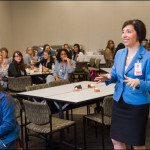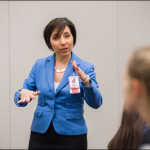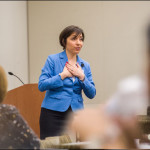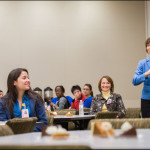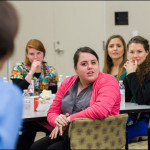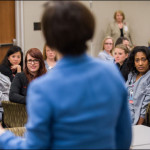
New study puts spotlight on tuberculosis in children
A recent article in the Wall Street Journal featured a study from researchers at Brigham and Women’s Hospital and Harvard Medical School suggesting that Tuberculosis (TB) affects about one million children worldwide, twice as many as previously estimated. At Texas Children’s, TB experts identified this major pediatric health issue years ago, stressing that children are much more likely to develop TB disease following infection than adults and bear a relatively larger share of morbidity and mortality than adults.
According to Dr. Jeffrey Starke, director of the Children’s Tuberculosis Clinic at Texas Children’s, these new numbers are a reflection of more sophisticated and accurate diagnostic methods, since TB is difficult to confirm microbiologically in children (the traditional methodology of diagnosis in adults). In addition, it wasn’t until 2012 that the World Health Organization (WHO) released its first ever estimate of children with TB.
Having accurate numbers for pediatric TB is critical for funding purposes, and the new estimates will help shed light on this epidemic. “People interested in child survival and the Millennium Development Goals are going to look for what diseases are causing most morbidity and mortality in the world,” said Starke.
Texas Children’s Global Health Initiative has been working to actively address barriers to the care of childhood TB and to expand the spectrum of services available to children with TB through the Children’s Tuberculosis Initiative at Texas Children’s. The program aims to use the tools of research, education and advocacy to prevent, diagnose and treat tuberculosis in children, in order to support an ultimate goal of TB elimination.
“TB in children is often missed or overlooked,” said Dr. Anna Mandalakas, director of the Global Tuberculosis Program at Texas Children’s. “TB is a preventable and curable disease, but child health care providers in the US and abroad often miss opportunities to prevent TB and often diagnose pediatric TB late, making treatment more difficult.”
The Global Tuberculosis Program is implementing two TB REACH projects funded by the Stop TB Partnership as a part of the WHO, with the objective to improve TB case finding in Lesotho and Swaziland. The projects use a GeneXpert-Rif technology, a relatively new diagnostic near-point-of-case test that has become an important tool for improving TB diagnosis in children.
Globally, up to 50 percent of children less than 12 months of age develop the disease and every day up to 200 children die from the disease. Young children, malnourished children, and children whose immune systems are weak, such as those with HIV infection, have an exceptionally high risk of developing severe and life threatening disease following infection. In areas of high HIV prevalence, tuberculosis is thought to be the main killer of HIV-infected persons.
Since children with HIV-infection are at increased risk of TB disease, the Global TB Program is working closely with Baylor International Pediatric Aids Initiative (BIPAI) to enhance TB clinical programs. Information learned from the BIPAI network promises to fill major gaps regarding the burden of TB disease in HIV infected children and adolescents.
“HIV has changed the landscape dramatically,” said Mandalakas. “The TB-HIV co-infection is a deadly combination leading to an increase in morbidity and mortality in children globally.”
But TB is not just a global problem. Tuberculosis remains an issue in industrialized nations too. In 2010, more than 11,000 cases of tuberculosis disease were reported in the United States, with an estimated incidence of 3.8 cases per 100,000 persons. Texas comprised 12 percent of all TB cases in the United States (the second highest burden of childhood TB among US states). And within the state, Harris County had more TB cases than any other county in 2012. This may be explained by the large population of immigrants in the area, as children with the greatest risk of having TB include those who were born in or have lived in another country, or those who have a parent that was born outside of the US.
“We had one day in our TB clinic where we spoke seven different languages,” said Starke. “We see people from all over the world, both people who developed TB after coming to the US, and those were infected with TB in their home country. Most children who immigrate to the US receive no testing and no screening for TB and many of them are coming from an environment where TB is common and can easily be spread.”
According to Mandalakas, any child who is exposed to an adult with TB should complete a detailed evaluation to make sure that they do not have TB. If TB is not diagnosed, TB-exposed children can reduce their risk of developing TB to negligible levels by taking TB preventive medicines.
“We can’t look at TB in isolation,” said Starke. “We have to look at the bigger picture, the people they are around, the community and the circumstances.”











